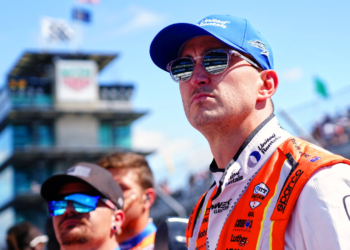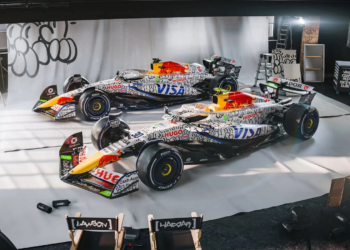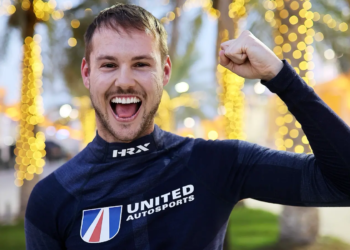Formula 1 makes its annual sojourn across the Atlantic to Montreal for the Canadian Grand Prix, land of poutine, maple syrup and Mounties. Motorsport Week previews the event and provides the key statistics.
History
The Canadian Grand Prix can trace its history back to 1961 and the country joined the Formula 1 World Championship in 1967 at Mosport Park.
A couple of events were held at Mont-Tremblant – the circuit now owned by Lance Stroll’s father Lawrence – before the Grand Prix circus settled on a new venue in Montreal for 1978.
A circuit was built on the man-made Ile Notre Dame, constructed for the Expo 67, in the middle of the St. Lawrence Seaway, close to the city of Montreal.
The circuit, renamed after local hero Gilles Villeneuve following his death in 1982, is popular with drivers, while the vibrancy of nearby Montreal enhances the experience for spectators.
Only twice – in 1987 and 2009 – has the event been skipped from the schedule, while its long-term future has already been secured, with extensive pit and paddock renovations set to begin after this year’s race.
Circuit
The circuit comprises some of the roads on the Ile Notre Dame that make up Parc Jean Drapeau, a leafy and secluded area named after the late mayor of Montreal.
The wall-lined nature of the low-grip circuit has caught out many drivers through its esteemed history, with brakes, tyres and engines all put through an extensive workout.
The ‘Senna S’ opens the lap with a small right kink leading into a heavy braking zone at Turn 1, a tight left-hander that immediately opens into an arcing right-hander, with the imposing grandstands giving the complex a stadium feel.
Drivers rise gradually uphill before descending into the right-left switch at Turn 3/4, where the kerbs need to be ridden, and the concrete wall lining the exit of Turn 4 avoided.
The blind medium-speed Turn 5 leads drivers straight into Turn 6, a 90-degree left-hander that requires a tight line in order not to compromise Turn 7, ostensibly a right-hand acceleration zone where drivers can easily be sucked into the narrow strip of grass – and brush the concrete wall.
The Turn 8/9 complex is a slightly faster-mirrored version of Turn 6/7, which is followed by L’Epingle, the slowest corner on the circuit, from where traction is critical in order to carry as much speed as possible along the back straight, adjacent to the Rowing Basin that hosted the 1976 Summer Olympics.
The circuit’s defining pair of turns is the final complex – a heavy braking zone and a right-left chicane with high kerbs and a wall on exit: the Wall of Champions, named after the high-profile victims it has claimed in previous seasons.
What then do you need to succeed? A low-downforce set-up, lots of power, traction, confidence on the brakes, and a car that can comfortably ride kerbs – oh, and mind those walls…
“It’s certainly a different circuit, quite similar to Melbourne in a way, as it’s a mix of a street and a permanent track,” says Carlos Sainz Jr.
“The circuit is usually dirty with leaves and even wildlife during the early parts of the weekend and that makes it a bit of a challenge to get up to speed.
“I quite like the section between Turns 4 to 7. The walls are close and you have to find the rhythm through there to get it right and ride over the kerbs.”
What happened in 2017?
Lewis Hamilton dominated proceedings as he claimed pole position by three-tenths of a second and romped to victory by almost 20 seconds, as Valtteri Bottas completed a comfortable Mercedes 1-2.
Red Bull’s Daniel Ricciardo took third place while Ferrari’s Sebastian Vettel recovered from first-lap front wing damage to finish fourth, his drive through the midfield providing much of the entertainment as he preserved his position atop the standings.
Force India pair Sergio Perez and Esteban Ocon fiercely scrapped over fifth – marking the start of their sequence of mid-season clashes – while home hero Lance Stroll scored his maiden points in ninth for Williams.
Hamilton’s victory was his sixth at the Canadian Grand Prix, and it came 10 years after he stormed to his maiden Formula 1 win at the venue.
Along with his 2007 and 2017 triumphs, Hamilton has also taken top spot in 2010, 2012, 2015 and 2016.
Only once – when he was third in 2013 – has he not departed Montreal as either the victor or as a retiree.
Hamilton’s supremacy at the event means there have been slim pickings for his contemporaries.
Kimi Raikkonen (2005) and Kimi Raikkonen (2006) were both victorious prior to Hamilton’s arrival on the scene, while Sebastian Vettel succeeded for Red Bull in 2013.
Daniel Ricciardo famously grabbed his maiden win at the 2014 running of the event after both Mercedes cars were slowed by an MGU-K failure.
Even with his six wins, Hamilton still sits second on the all-time list – top spot belongs to Michael Schumacher, who took seven wins between 1994 and 2004.
The pair, though, are comfortably in front of Nelson Piquet, with three wins, while a host of other drivers, including Sir Jackie Stewart and Ayrton Senna, triumphed twice.
Hamilton and Schumacher have both taken six pole positions in Montreal, the Briton the top qualifier in 2007, 2008, 2010, 2015, 2016 and 2017.
Vettel’s sole Montreal win has been backed up by three pole positions at the circuit, achieved in 2011, 2012 and 2013, while Alonso is the only other polesitter on the current grid, accrued in 2006.
Other details
Tyre supplier Pirelli has nominated the Hypersoft (pink), Ultrasoft (purple) and Supersoft (red) tyres for this weekend’s event.
Either the Ultrasoft or Supersoft tyres must be run for one stint of the 70-lap Grand Prix, should dry conditions prevail.
There will be two DRS zones, one located along the pit straight and the other on the back straight, governed by a single detection point.
Five-times Le Mans winner Emanuele Pirro will act as the Driver Steward.
Weather forecast:
Friday: Partly sunny, 23°c
Saturday: Partly sunny, 21°c
Sunday: Partly sunny, 20°c
Timetable: (GMT-4)
Friday 8 June
FP1: 10:00 – 11:30
FP2: 14:00 – 15:30
Saturday 9 June
FP3: 11:00 – 12:00
Qualifying: 14:00 – 15:00
Sunday 13 May
Race: 14:10 (70 laps or two hours)
Get every session time in your local timezone with our F1 calendar.
What next?
The returning French Grand Prix will host the eighth round of the season from June 22 to 24.






